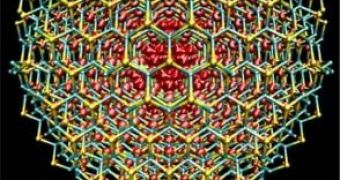Nanomaterials play a high role in today's electronic devices ranging from transistors all the way to lasers and solar-energy conversion devices. A new technique developed at the Lawrence Livermore National Laboratory could allow researchers to manipulate nanomaterials and their fundamental properties only by applying pressure.
The experimental rig used by the LLNL researchers uses a cadmium selenide quantum dot solid placed under a pressure 70,000 times that of the Earth's atmosphere. The properties of the cadmium selenide nanocrystal were then studied with the help of laser based luminescence technique and compared with the theoretical predictions.
"We closely compared our results with theoretical calculations. These results were completely consistent with our experimental observations", said Christan Grant, part of the LLNL team participating in the experiment. However, when even pressure was applied over the nanocrystal the results no longer matched those predicted by theory. The phenomenon manifests itself through a large variation in the crystal fluorescence when subjected to local stress states.
A quantum dot is a semiconducting material that has its electrons confined in all three spatial dimensions. Their size can range between one and one hundred nanometers and they often experience chemical and physical properties different from those of bulk materials. Packing quantum dots into highly compacted materials gives rise to quantum dot solids, materials that present particle-particle coupling as well as electronic properties characteristic to both individual and collective particles.
The electronic properties of quantum dot solids have been studied by the LLNL team in a series of different pressure media and the scientists have observed that, according to the medium, the energy evolves as a function of pressure or decreases and stops after an initial massive energy increase. "High pressure provides insight into the fundamental properties of nanoparticles, which can be drastically different from the corresponding bulk material", explained Grant.
The phase transition in bulk cadmium selenide material takes place at much lower pressures than that of quantum dot solids.

 14 DAY TRIAL //
14 DAY TRIAL //